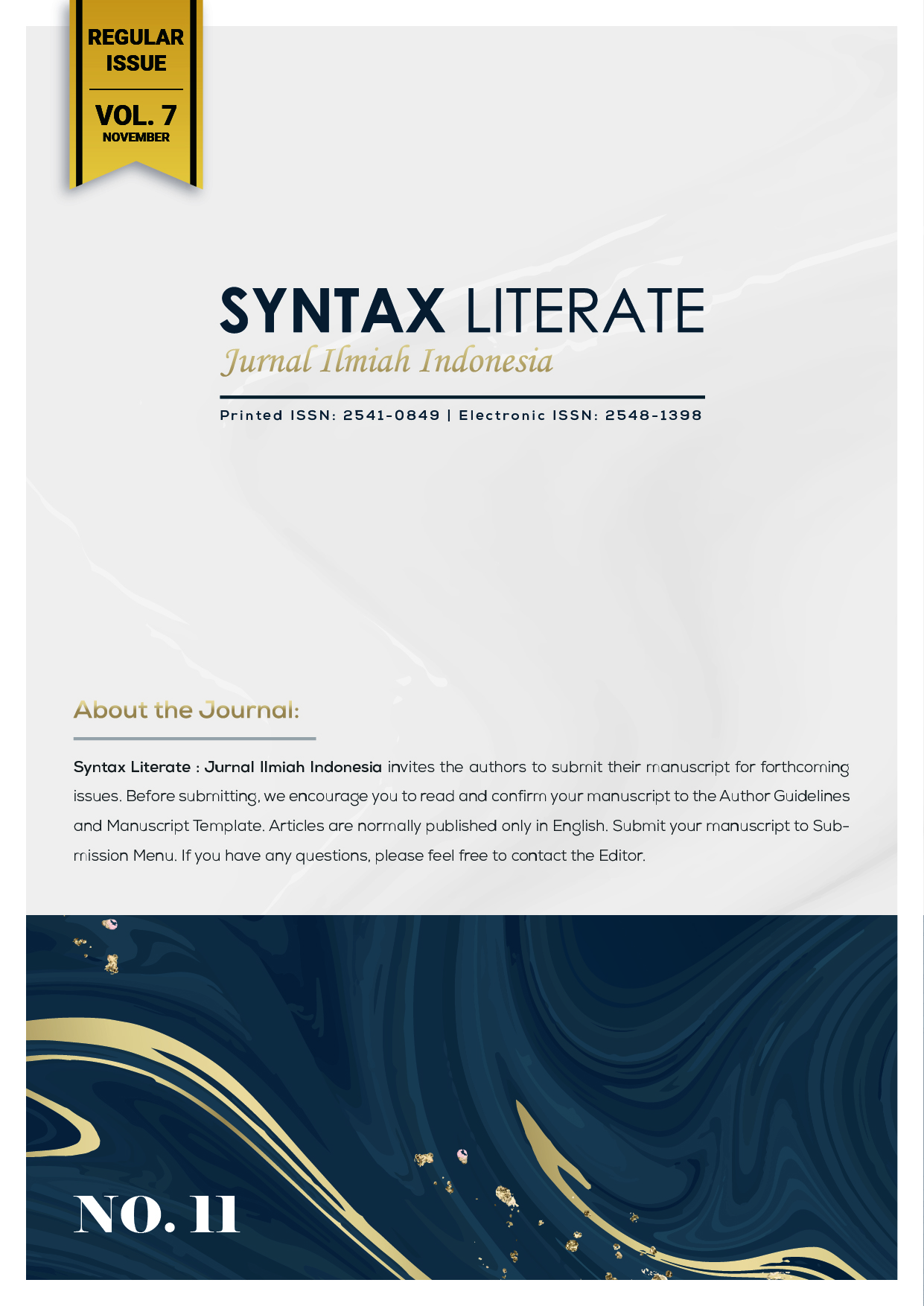Hepa Water Purification Influence on Decreasing Germs Number in Isolation Treatment Room Kediri Regency Hospital
Abstract
Pure and Fresh, is the air condition that everyone dreams of anywhere and anytime, including sick people in the Hospital Treatment Room. The germ index and room dust content also affect the comfort and health of residents which is a standard quality standard for microbiological and physical parameters for hospital air. This study aims to analyze the effect of HEPA air purification in reducing germ numbers in the isolation treatment room of Kediri Regency Hospital, and the specific purpose of this study is to analyze the difference in the number of airborne germs in the isolation treatment room of Kediri Regency Hospital before and after the use of HEPA air purification, This study uses a pre-experimental design. The sample of this study was 5 class 1 rooms of the Isolation Treatment Room of Kediri Regency Hospital. The sampling technique is total sampling. The Wilcokson test was used for data analysis with a significant level (α) = 0.05. The results of the data analysis showed that there was a difference in the number of airborne germs in the isolation treatment room of Kediri District Hospital between before the use of Air Purification HEPA and after the use of Air Purification HEPA. So the use of Air Purification HEPA has an influence on the number of airborne germs in the isolation treatment room of Kediri Regency Hospital.
Downloads
References
Andriani, Yulianti, Posmaningsih, (2014). Jurnal Kesehatan Lingkungan Vol. 4 no 1, Studi Tentang Keadaan Sanitasi.
Catur Puspawati, Kuat Prabowo, Pujiono, (2020). Kesehatan Lingkungan Teori dan Aplikasi Kedokteran. EGC. Jakarta
Dae Hoon Park, Yun Haeng Joe, Amin Piri, Sanggwon An, &Jungho Hwang. (2020). Determination of Air Filter Anti-Viral Efficiency against an Airborne Infectious Virus. US National Library of Medicine - Published online.
Darmadi, (2008). Infeksi Nosokomial Problematika dan Pengendaliannya. Salemba Medika. Jakarta.
David A. Christopherson, William C. Yao, Mingming Lu, R. Vijayakumar, & Ahmad R. Sedaghat (2020). High-Efficiency Particulate Air Filters in the Era of COVID-19 : Function and Efficacy. American Academy of Otolaryngology–Head and Neck Surgery Foundation 2020 Reprints and permission:sagepub.com/journalsPermissions.nav DOI: 10.1177/0194599820941838. http://otojournal.org.
Fitria Fatma, Rizki Ramadhani, (2020). Jurnal Human Care. Volume 5; No.3. Perbedaan jumlah angka kuman udara berdasarkan hari dalam ruangan di Puskesmas Guguk Panjang. Prodi Ilmu Kesehatan Masyarakat, Universitas Fort De Kock
Hamilton Thorne, Inc. (2020). Air Purification HEPA Hospital Grade (NATIF). All rights reserved. Beverly, MA 01915 USA.
Himanshu Mittal, Simon R. Parks, Thomas Pottage, James T. Walker*, and Allan M. Bennett. (2011). Survival of Microorganisms on HEPA Filters Applied Biosafety Vol. 16, No. 3, Health Protection Agency, Porton Down, Salisbury, Wiltshire, United Kingdom.
https://www.hamiltonthorne.com/index.php/portable-zandair-100p-pathology.
Jurnal Kesehatan Masyarakat (e-Journal). Volume 4, Nomor 4, Oktober 2016 (ISSN: 2356-3346). faktor-faktor yang berhubungan dengan angka kuman udara di rawat inap kelas tiga RSUD Dr. Moewardi Surakarta http://ejournal-s1.undip.ac.id/index.php/jkm
Kementerian Kesehatan RI (2012). Pedoman Teknis Fasilitas Rumah Sakit Kelas B. Jakarta.
Kementerian Kesehatan RI (2012). Pedoman Teknis Prasarana Sistem Tata Udara pada Bangunan Rumah Sakit Jakarta.
Kementerian Kesehatan RI (2012). Pedoman Teknis Ruang Isolasi. Jakarta
Kementerian Kesehatan RI (2020). Pedoman Teknis Bangunan dan Prasarana Ruang Isolasi Penyakit Infeksi Emerging (PIE). Jakarta.
Kementerian Kesehatan RI. Keputusan Menteri Kesehatan Republik Indonesia Nomor 1204/MENKES/SK/X/2004 tentang Persyaratan Kesehatan Lingkungan Rumah sakit. Jakarta
Koes Irianto, (2014). Bakteriologi, Mikrobiologi dan Virologi. Panduan Medis dan Klinis. Alfabeta. Bandung.
Liena Sofiana, Dwi Wahyuni (2016). pengaruh antara sterilisasi ozon terhadap penurunan angka kuman udara di ruang rawat inap di RSU PKU Muhammadiyah Bantul. Jurnal KESMAS Vol. 9, No. 1, Maret 2015 : 19 – 24. Fakultas Kesehatan Masyarakat, Universitas Ahmad Dahlan, Yogyakarta.
N. Wahyuningsih dan E. Zulaika, (2018). Jurnal Sains dan Seni ITS Vol. 7, No. 2 , 2337-3520, Perbandingan Pertumbuhan Bakteri Selulolitik Pada Media Nutrient Broth dan Carboxy Methyl Cellulose.
Neti Yuliana, (2008). Jurnal Teknologi Industri dan Hasil Pertanian Volume 13, No. 2, September. Kinetika Pertumbuhan Bakteri Asam Laktat Isolat T5 yang Berasal Dari Tempoyak.
Nunu Wati Raharusun, (2014). Analisis Pertumbuhan Bakteri E. Coli Pada Berbagai Lama Penyimpanan Agar-Agar Dingin, Pendidikan Biologi Fakultas Ilmu Tarbiyah dan Keguruan IAIN Ambon, Skipsi.
Queeniza Ulya Yonata, (2020). Jurnal Penelitian Kesehatan Suara Forikes. Volume 11 Nomor 3. Faktor yang Berhubungan dengan Angka Kuman Udara di Rumah Sakit Soemitro Surabaya. Jurusan Kesehatan Lingkungan, Poltekkes Kemenkes Surabaya.
Rani Prihatmanti, (2016). Majalah Rumahku, No. 118. Hal.48-49 kualitas udara dalam ruangan.
Robert A. Pollack, (2014). Praktik Laboratorium Mikrobiologi. Alih Bahasa Triashira Laksmhi. Kedokteran EGC. Jakarta.
Romie Priyastama, (2017). Buku Sakti Kuasai SPSS Pengolahan Data dan Analisis Data. Start Up. Bantul.
Soekidjo Notoatmodjo, (2012). Metodologi Penelitian Kesehatan. Rineka Cipta. Jakarta.
Syaifuddin, (2021). Ilmu Biomedik Dasar II Untuk Keperawatan dan Kebidanan. Kedokteran EGC. Jakarta.
Titik C, Hutwan, Julius, (2020). Jurnal Pembangunan Berkelanjutan, Volume 3 Issue 2 Program Studi Magister Ilmu Lingkungan Universitas Jambi. Analisis Kualitas Mikrobiologi Udara Dalam Kamar Operasi Pada Instalasi Bedah Sentral Rumah Sakit “ X “ Kota Jambi.
Yu Huang, Steven Sai Hang Ho, Yanfeng Lu, Ruiyuan Niu, Lifeng Xu, Junji Cao, & Shuncheng Lee (2016). Removal of Indoor Volatile Organic Compounds via Photocatalytic Oxidation: A Short Review and Prospect. Molecules 2016, 21, 56; doi:10.3390/molecules21010056www.mdpi.com/journal/molecules.
Copyright (c) 2022 Joko Sasmito, Indasah Indasah

This work is licensed under a Creative Commons Attribution-ShareAlike 4.0 International License.











